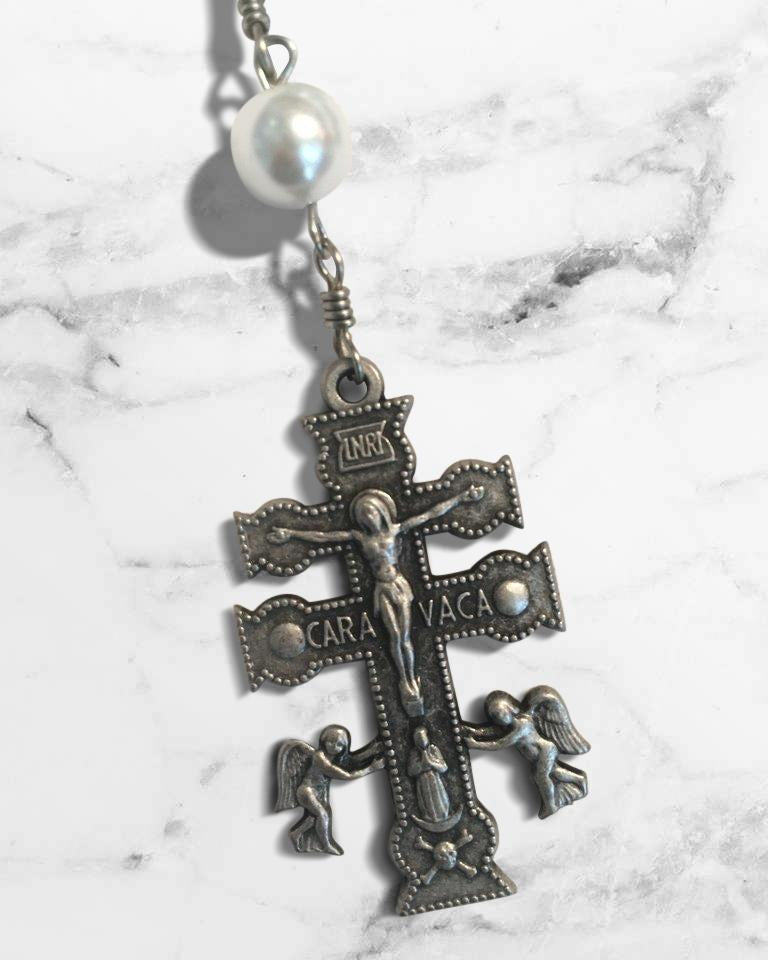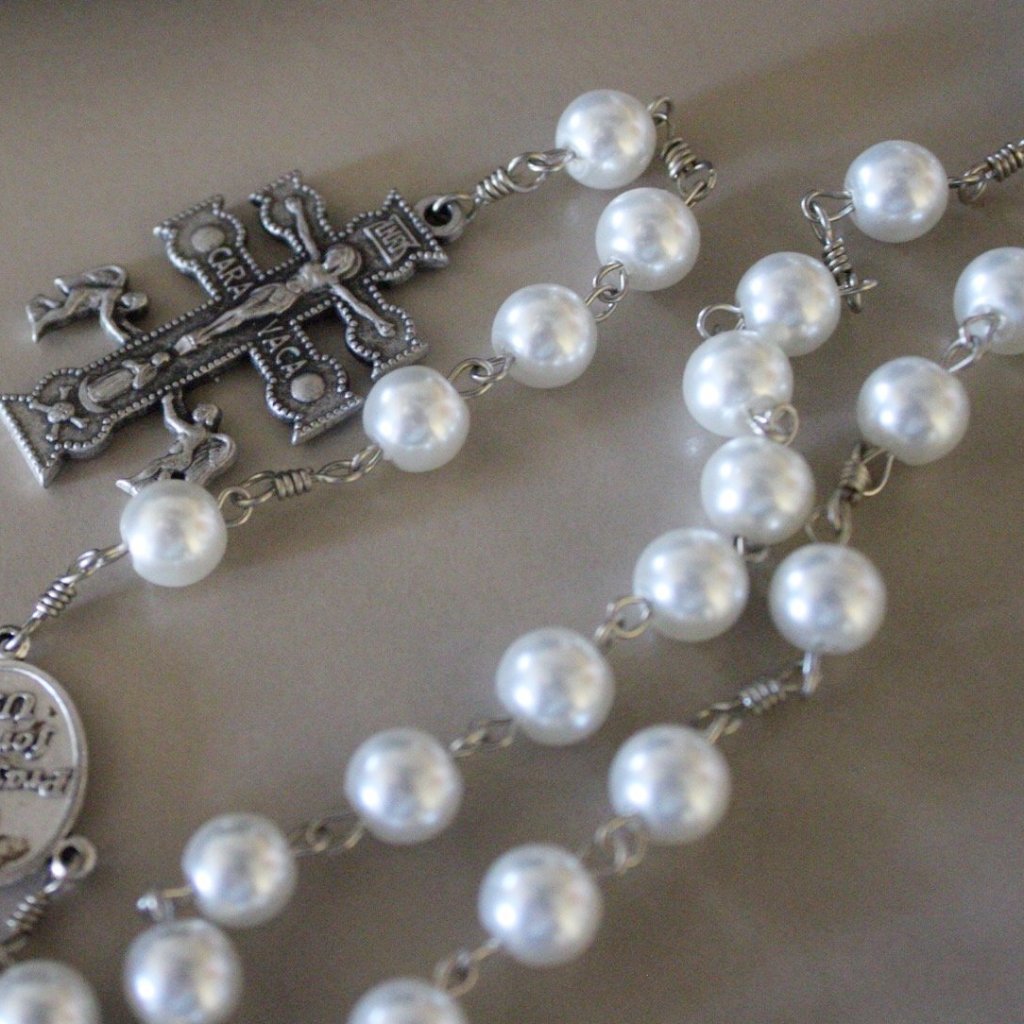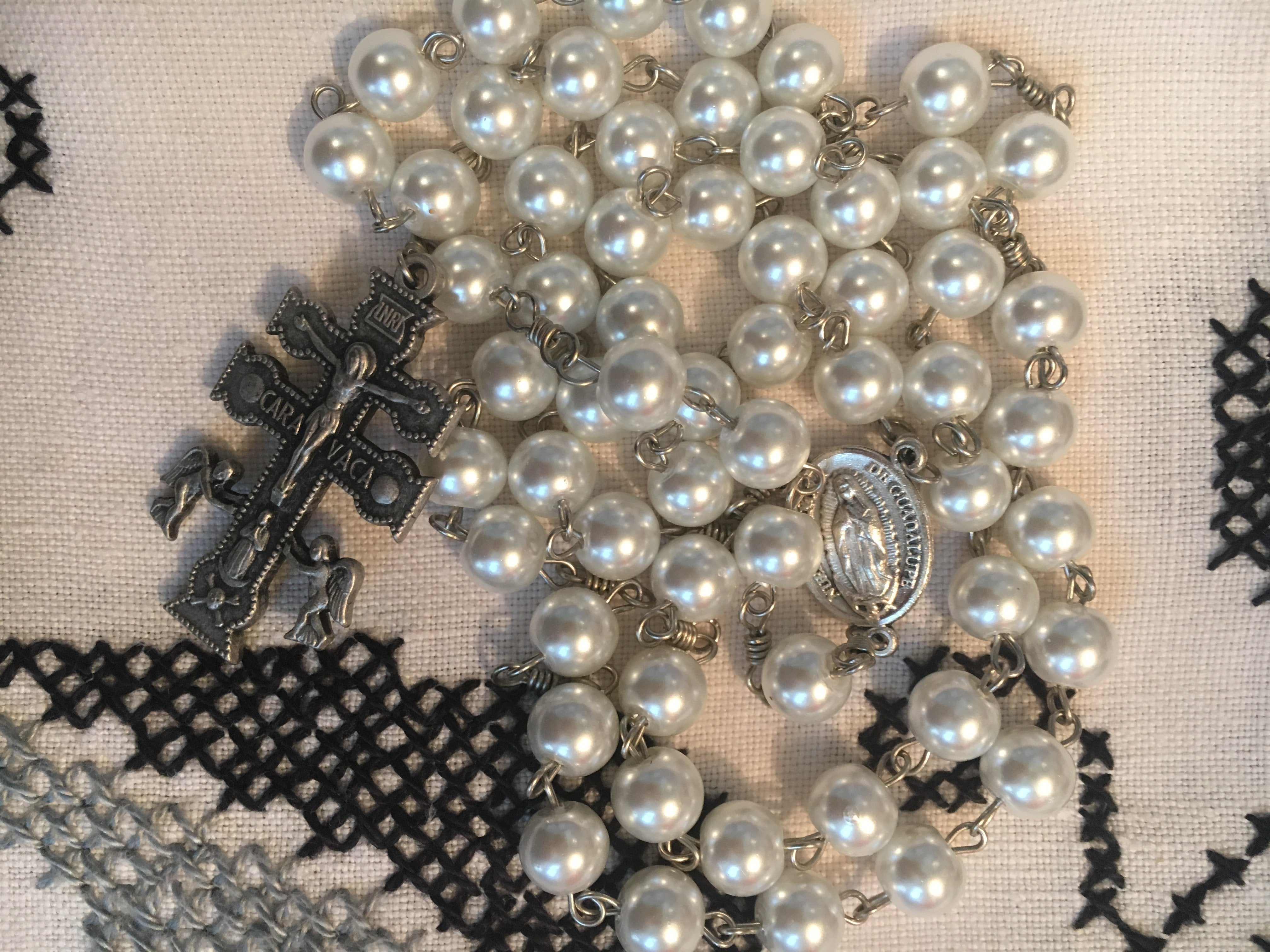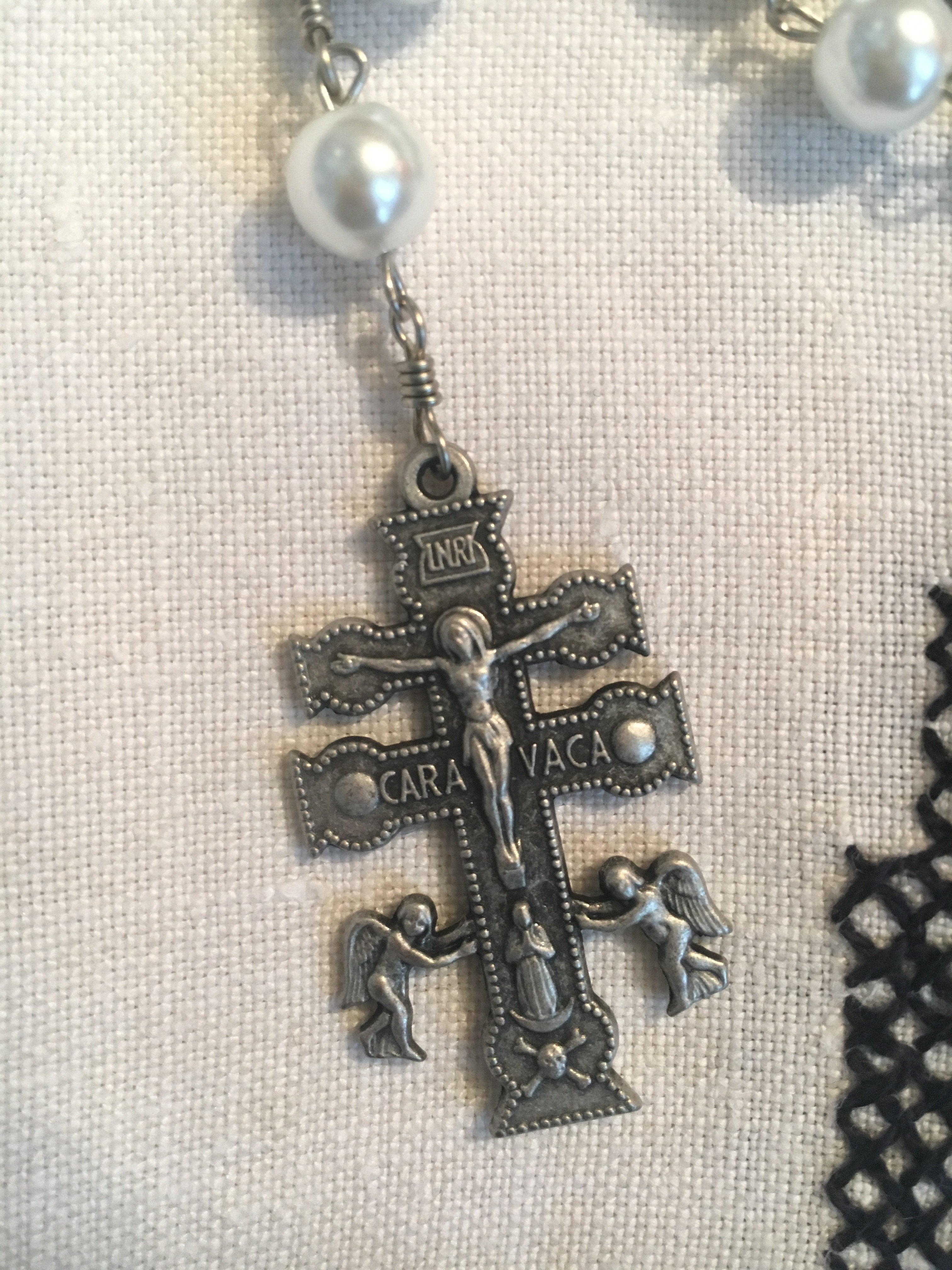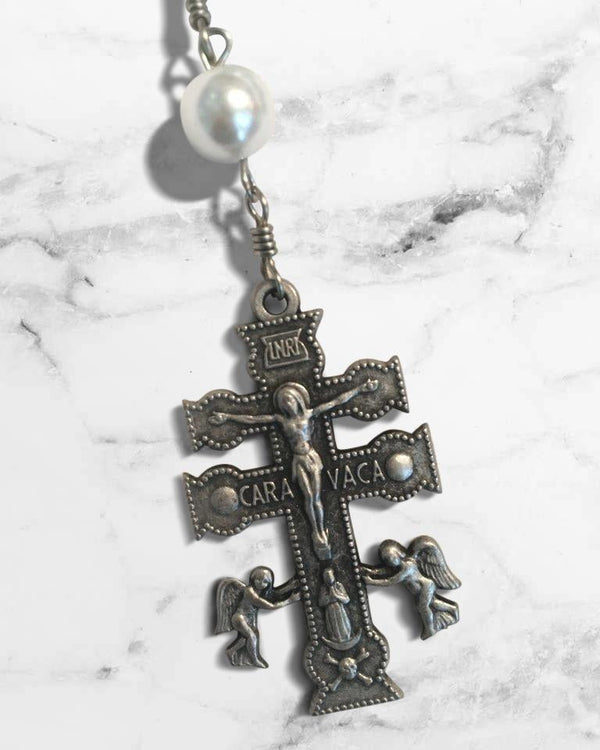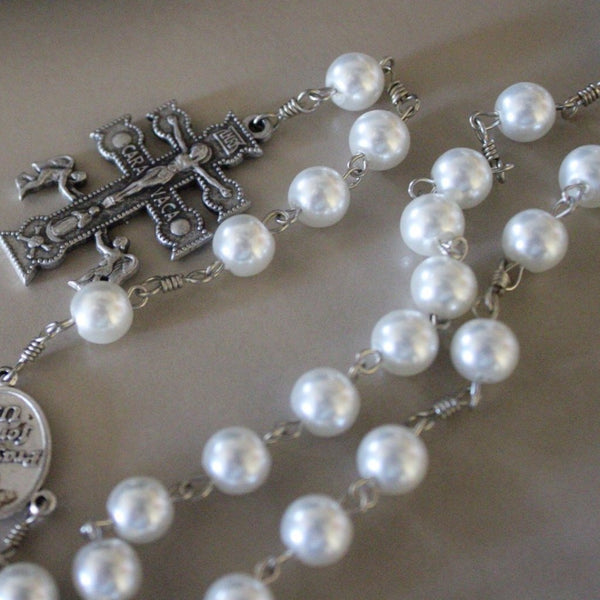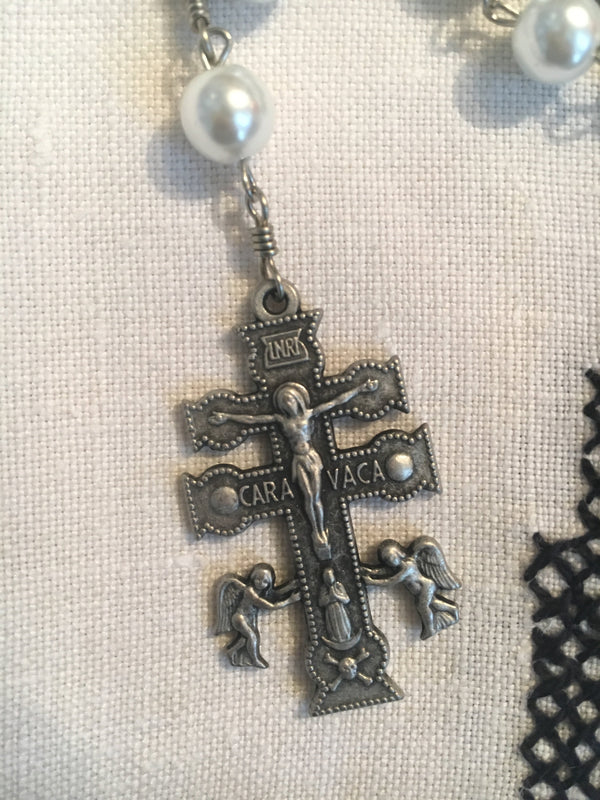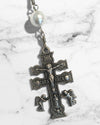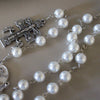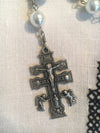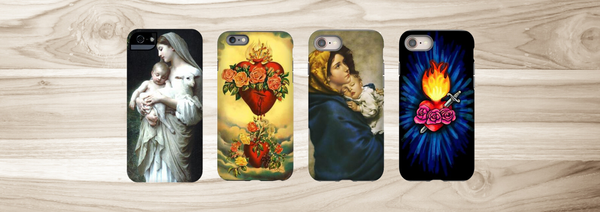This exquisite white-glass pearl rosary features a silver Our Lady of Guadalupe centerpiece on the front and Santo Niño de Atocha on the reverse, and a stunning nickel silver Caravaca Double Cross and silver wiring. The 8mm Aves and Paters are white coated glass pearls. A unique and beautiful hand-crafted rosary by Shannon in Colorado.
This rosary measures 22.5 inches when laid flat
Prayer for the Cruz de Caravaca:
Holy Cross of Caravaca, I take refuge under your mighty power so that your force distances from my life any wrong or illness that may trouble me and retire the pains that afflict me. Oh, Heavenly Cross, for the power of the good, liberate me from all wrong. Incline the Lord to hear my plea, with which I implore love and understanding for my health. Guide me, Holy Cross of Caravaca, in the traffic of my terrestrial life and illuminate me. Preserve me in the most dangerous moments of my life, mainly when my health is precarious. I beg you, blessed Cross, that your support come into to my life and I be well in order to continue maintaining my willpower and my health. Amen.
History of the Cruz de Caravaca:
In the early 8th century, Arabs and Berbers invaded the Iberian peninsula and occupied the territory. It took almost 800 years for Christians to reconquest the land.
In the middle of that period, in the year 1231 (or 1232 by some accounts), a miracle occurred in the southeastern Spanish town of Caravaca de la Cruz. The town is set among the rugged sierras of Murcia, which at that time was still a Moorish kingdom under Zeyt-Abuzeyt. Being several generations away from the initial invaders, he was from a line of well-established monarchs and one of his duties was to protect the region from invasion by the Christians. The Christian Reconquesta took various forms; from fighting to gradual infiltration through missionaries. One such Christian missionary was Don Gínes Pérez Chirinos de Cuenca. He was captured and taken before the Muslim king who was curious about certain aspects of the Christian faith. In particular, he was interested in the Christian celebration of the Last Supper and asked the missionary to demonstrate the procedure. One can imagine the priest would be reluctant to do this - in those days only believers were present during the sacrament. Nevertheless, he agreed and the king arranged for the necessary apparatus: an altar draped with a pall cloth, bread and wine, and some candles. One important element, however, was missing: the cross. The missionary explained that the presence of a cross was critical to the Eucharist and he could not continue without one. The king exclaimed: "So what is that?" (but in Iberian, of course), pointing to something at the window. From the heavens, two angels appeared carrying a cross, which they placed on the altar and then disappeared.
The priest continued with the Mass. In the Catholic Church, when the bread and wine are consecrated during Mass, they cease to be bread and wine, and become instead the body and blood of Christ. The empirical appearances are not changed, but the reality is. When missionary Don reached the consecration stage, the king saw a beautiful baby instead of the bread (Host). The king was so taken aback by this miraculous image that he, and his family, converted to Christianity and asked to be baptized into the Christian faith. Many believe that the cross delivered by the angels included a piece of the True Cross.
(Excerpt from https://en.wikipedia.org/wiki/Caravaca_de_la_Cruz)

